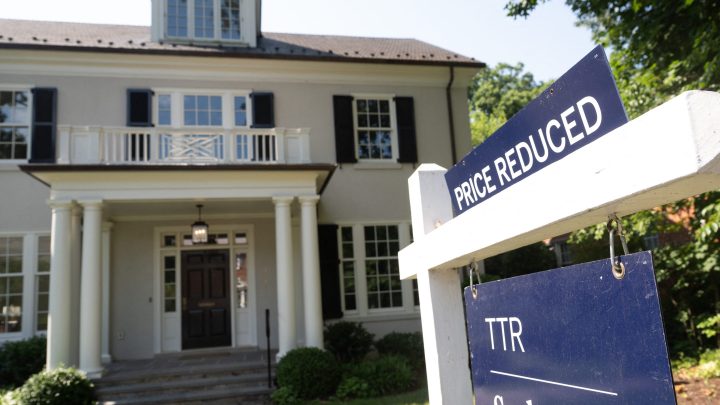
The rise and fall of home prices across America

The CoreLogic Case-Shiller index of existing home prices came out Tuesday. Prices in May were both up and down. But this is not Schrödinger’s house, and we don’t need quantum physics to explain the housing market today.
Home prices were down if you compare them to the year before. Same story with April.
“What’s happened is that the market peaked in roughly June of 2022, so that’s why we’re lower today than we were a year ago,” said Craig Lazzara, a managing director at S&P Dow Jones Indices.
In some places, sale prices of existing homes saw wild drops. Regionally, the West had it the worst. Seattle and San Francisco were both down around 11%.
“Seattle and San Francisco are two of the markets that have been hardest hit by the increasing rate of work from home,” said Jenny Schuetz, a senior fellow at Brookings.
Both cities have a lot of remote tech jobs and people who asked, “Why pay Seattle and San Francisco housing prices if I don’t have to?” Meanwhile, the Midwest saw existing home prices rise. Cleveland was up almost 4%, Chicago almost 5%.
“It’s a result of the fact that they didn’t boom as much in 2021 and 2020,” said Chris Mayer, a professor of real estate at Columbia Business School. While some parts of the country, like Phoenix and Las Vegas, saw existing home prices soar 40% or 50% between 2020 and 2022, the Midwest did not.
“And therefore didn’t fall as much in ’22, so they’ve been kind of more steady,” Mayer said.
But one thing all the cities in the Case-Shiller index had in common was that existing home prices started rising again in February of this year, even though the Federal Reserve has been raising interest rates.
“It really is an imbalance of supply and demand,” Mayer said.
So at least for now, we are back to the same housing script we’ve had for decades — there aren’t enough homes.
There’s a lot happening in the world. Through it all, Marketplace is here for you.
You rely on Marketplace to break down the world’s events and tell you how it affects you in a fact-based, approachable way. We rely on your financial support to keep making that possible.
Your donation today powers the independent journalism that you rely on. For just $5/month, you can help sustain Marketplace so we can keep reporting on the things that matter to you.











